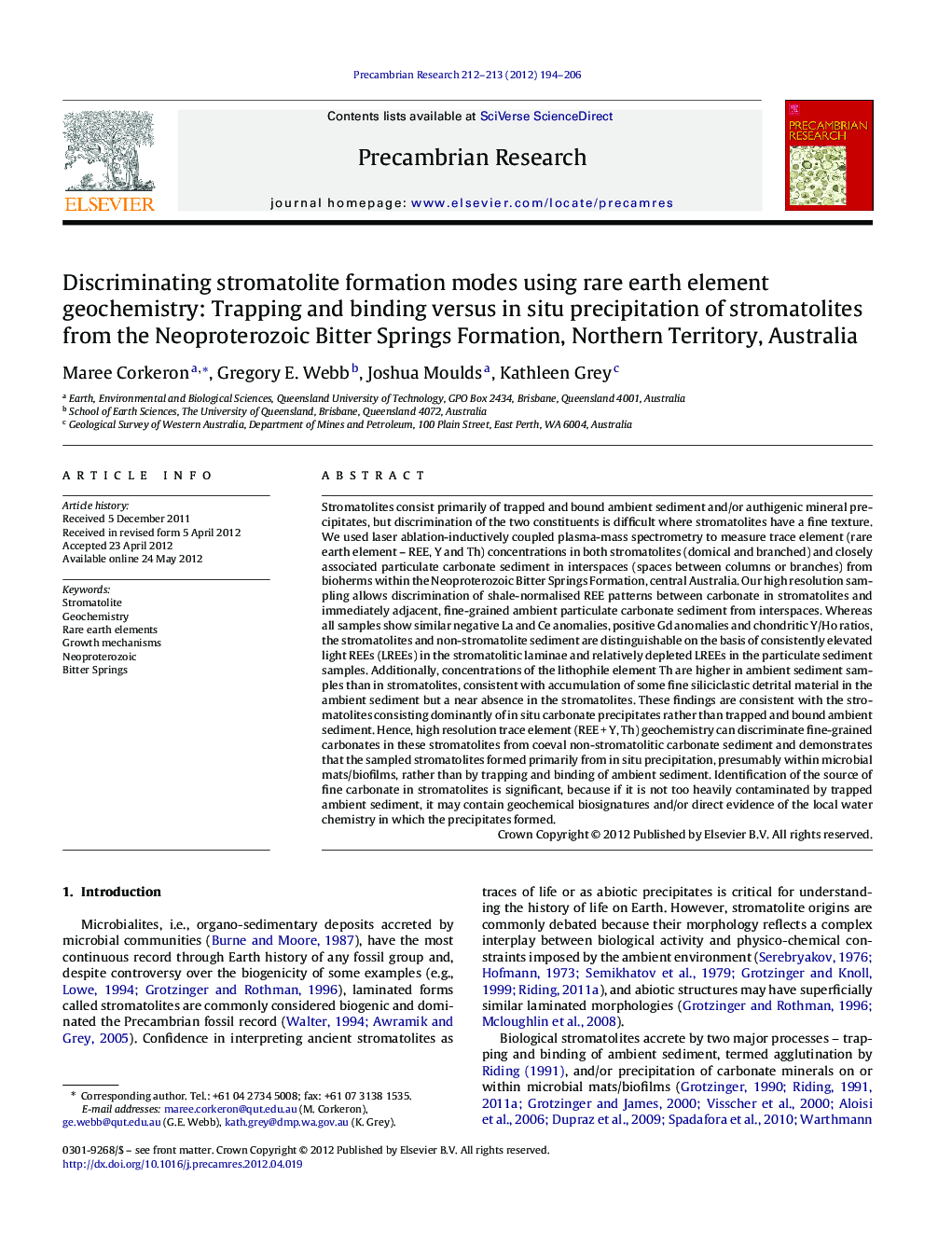| کد مقاله | کد نشریه | سال انتشار | مقاله انگلیسی | نسخه تمام متن |
|---|---|---|---|---|
| 4723541 | 1639655 | 2012 | 13 صفحه PDF | دانلود رایگان |

Stromatolites consist primarily of trapped and bound ambient sediment and/or authigenic mineral precipitates, but discrimination of the two constituents is difficult where stromatolites have a fine texture. We used laser ablation-inductively coupled plasma-mass spectrometry to measure trace element (rare earth element – REE, Y and Th) concentrations in both stromatolites (domical and branched) and closely associated particulate carbonate sediment in interspaces (spaces between columns or branches) from bioherms within the Neoproterozoic Bitter Springs Formation, central Australia. Our high resolution sampling allows discrimination of shale-normalised REE patterns between carbonate in stromatolites and immediately adjacent, fine-grained ambient particulate carbonate sediment from interspaces. Whereas all samples show similar negative La and Ce anomalies, positive Gd anomalies and chondritic Y/Ho ratios, the stromatolites and non-stromatolite sediment are distinguishable on the basis of consistently elevated light REEs (LREEs) in the stromatolitic laminae and relatively depleted LREEs in the particulate sediment samples. Additionally, concentrations of the lithophile element Th are higher in ambient sediment samples than in stromatolites, consistent with accumulation of some fine siliciclastic detrital material in the ambient sediment but a near absence in the stromatolites. These findings are consistent with the stromatolites consisting dominantly of in situ carbonate precipitates rather than trapped and bound ambient sediment. Hence, high resolution trace element (REE + Y, Th) geochemistry can discriminate fine-grained carbonates in these stromatolites from coeval non-stromatolitic carbonate sediment and demonstrates that the sampled stromatolites formed primarily from in situ precipitation, presumably within microbial mats/biofilms, rather than by trapping and binding of ambient sediment. Identification of the source of fine carbonate in stromatolites is significant, because if it is not too heavily contaminated by trapped ambient sediment, it may contain geochemical biosignatures and/or direct evidence of the local water chemistry in which the precipitates formed.
► REE + Y and Th concentrations were measured in ancient stromatolites and sediment.
► Stromatolites are characterised by elevated light REEs and near absence of Th.
► Particulate sediment is characterised by relatively depleted LREEs and high Th.
► Results indicate that the stromatolites consist of in situ carbonate precipitates.
► The Stromatolites did not form by trapping and binding of ambient sediment.
Journal: Precambrian Research - Volumes 212–213, August 2012, Pages 194–206